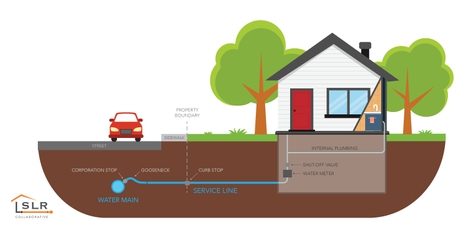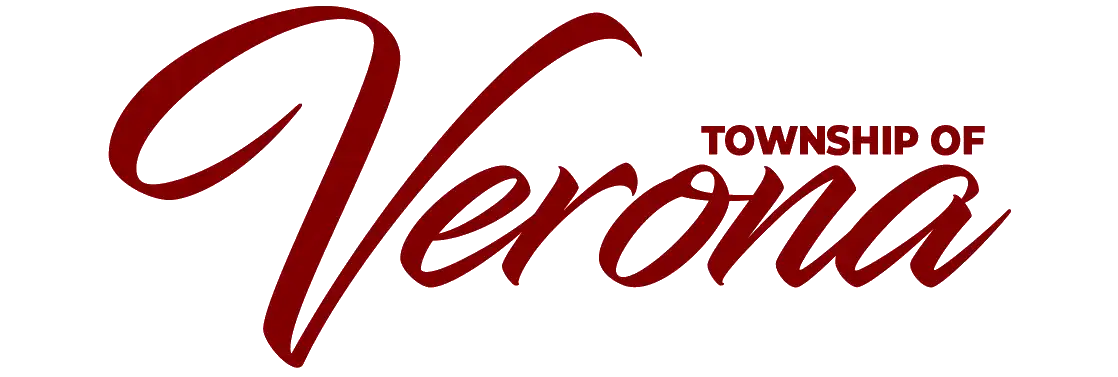Chuck Molinaro
Superintendent of Public Works
Assistant Supervisor of Public WorksStephen P. Lyons
Licensed Water Treatment Operator, Lyons Environmental Services, LLCThomas Feret/James Staudinger
Licensed Backup Water Treatment OperatorsMike Grasso
Licensed Waste Water Treatment OperatorDavid Legg
Licensed Backup Waste Water Treatment Operator
Lead & Galvanized Service Line Information
At this time, the Verona Water Department requests home owners schedule appointments to have their service line inspected.
Please call Verona Township Water Department at (973) 857-4805 to schedule your appointment or fill out the form below.
During the in-home inspection, the Verona Water Department will determine whether the service line in your home is copper, lead or galvanized steel in accordance with the requirements of EPA'S Lead and Copper Rule. As such, the Township will be taking necessary corrective action for the Township's service line up to the curb stop. The remainder of the service line remains your responsibility. Should you choose to change or maintain your current water service line it is at the property owner expense. Any necessary changes in piping, valves or connections from the point of connection at the curb stop to the meter, resulting from corrosion or otherwise, and all material and labor used to increase or improve the water supply or efficiency thereof must be made by the owner of premises at its own expense. All changes and improvements shall be subject ta inspection and approval by the Township Engineer. Pursuant to the Township Code (Section 519-5.B), the Township is responsible for the service line within the road and up to the curb stop (near the curb). As the property owner, you are responsible for the remainder of the water service. (See image below)
Documents & Forms
Lead Service Line Inventory (as of March 2025)
Water Service Line Material Online Survey
What is a Service Line?
A service line is a portion of a pipe that connect the water main to the building inlet as seen in the photo below (photo supplied by Lead Service Line Replacement Collaborative.) Ownership of the service line varies by water system, but for the Township of Verona, the service line is owned partially by the water system and the property owner. The service line materials on the water system side are copper and the service line materials on the property owner side are to be determined.

Health Effects of Lead
Lead can cause serious health problems if too much enters your body from drinking water or other sources. It can cause damage to the brain and kidneys and can interfere with the production of red blood cells that carry oxygen to all parts of your body. The greatest risk of lead exposure is to infants, young children, and pregnant women. Scientists have linked the effects of lead on the brain with lowered IQ in children. Adults with kidney problems and high blood pressure can be affected by low levels of lead more than healthy adults. Lead is stored in the bones, and it can be released later in life. During pregnancy, the child receives lead from the mother's bones, which may affect brain development. Contact your local health department or healthcare provider to find out how you can get your child tested for lead if you are concerned about lead exposure. You can find out more about how to get your child tested and how to pay for it at https://www.nj.gov/health/childhood-lead/
Sources of Lead in Drinking Water
Although most lead exposure occurs from inhaling dust or from contaminated soil, or when children eat paint chips, the U.S. Environmental Protection Agency (USEPA) estimates that 10 to 20 percent of human exposure to lead may come from lead in drinking water. Infants who consume mostly mixed formula can receive 40 percent to 60 percent of their exposure to lead from drinking water. Lead is rarely found in the source of your drinking water but enters tap water through corrosion, or wearing away, of materials containing lead in the water distribution system and household plumbing materials. These materials include lead-based solder used to join copper pipes, brass, and chrome-brass faucets, and in some cases, service lines made of or lined with lead.
New brass faucets, fittings, and valves, including those advertised as "lead-free", may still contain a small percentage of lead, and contribute lead to drinking water. The law currently allows end-use brass fixtures, such as faucets, with up to 0.25 percent lead to be labeled as "lead free". However, prior to January 4, 2014, "lead free" allowed up to 8 percent lead content of the wetted surfaces of plumbing products including those labeled National Sanitation Foundation (NSF) certified. Visit the NSF website at www.nsf.org to learn more about lead-containing plumbing fixtures. Consumers should be aware of this when choosing fixtures and take appropriate precautions.
When water stands in lead service lines, lead pipes, or plumbing systems containing lead for several hours or more, the lead may dissolve into your drinking water. This means the first water drawn from the tap in the morning, or later in the afternoon if the water has not been used all day, can contain fairly high levels of lead.
Steps You Can Take to Reduce Exposure to Lead in Drinking Water
For a full list of steps visit NJ DEP Division of Water Supply and Geoscience
1. Run the cold water to flush out lead. Let the water run from the tap before using it for drinking or cooking any time the water in the fa1icet has gone unused for more than six hours. The longer the water resides in plumbing the more lead it may contain. Flushing the tap means running the cold-water faucet. Let the water run the cold-water tap based on the length of the lead service line and the plumbing configuration in your home. In other words, the larger the home or building and the greater the distance to the water main (in the street), the more water it will take to flush properly. Although toilet flushing or showering flushes water through a portion of the plumbing system, you still need to flush the water in each faucet before using it for drinking or cooking. Flushing tap water is a simple and inexpensive measure you can take to protect your health. It usually uses less than one gallon of water.
2. Use cold, flushed water for cooking and preparing baby formula. Because lead from lead containing plumbing materials and pipes can dissolve into hot water more easily than cold water, never drink, cook, or prepare beverages including baby formula using hot water from the tap. If you have not had your water sampled or if you know, it is recommended that bottled or filtered water be used for drinking and preparing baby formula. If you need hot water, draw water from the cold tap and then heat it.
3. Do not boil water to remove lead. Boiling water will not reduce lead; however, it is still safe to wash dishes and do laundry. Lead will not soak into dishware or most clothes.
4. Use alternative sources or treatment of water. You may want to consider purchasing bottled water or a water filter. Read the package to be sure the filter is approved to reduce lead or contact NSF International at 800-NSF-8010 or www.nsf.org for information on performance standards for water filters.
5. Determine if you have interior lead plumbing or solder. If your home/building was constructed prior to 1987, it is important to determine if interior lead solder or lead pipes are present. You can check yourself, hire a licensed plumber, or check with your landlord.
6. Replace plumbing fixtures and service lines containing lead. Replace brass faucets, fittings, and valves that do not meet the current definition of "lead free" from 2014 (as explained above). Visit the NSF website at www.nsf.org to learn more about lead-containing plumbing fixtures. If you are planning to replace your lead service line, contact us at (973) 857-4805.
7. Remove and clean aerators/screens on plumbing fixtures. Over time, particles and sediment can collect in the aerator screen. Regularly remove and clean aerators screens located at the tip of faucets and remove any particles.
8. Test your water for lead. Call us at (973) 857-4805 to find out how to get your water tested for lead. Testing is essential because you cannot see, taste, or smell lead in drinking water. Verona water system provides free lead testing, P.L.2021, c.265 requires water systems to cover the testing of customer-requested samples under the instances of a lead and/or copper action level exceedance and partial lead service line replacement.
9. Get your child tested. Contact your local health department or healthcare provider to find out how you can get your child tested for lead if you are concerned about lead exposure. New Jersey law requires that children be tested for lead in their blood at both 1 and 2 years of age and before they are 6 years old if they have never been tested before or if they have been exposed to a known source of lead.
10. Have an electrician check your wiring. If grounding wires from the electrical system are attached to your pipes, corrosion may be greater. Check with a licensed electrician or your local electrical code to determine if your wiring can be grounded elsewhere. DO NOT attempt to change the wiring yourself because improper grounding can cause electrical shock and fire hazards.
11. Water softeners and reverse osmosis units will remove lead from water but can also make the water more corrosive to lead solder and plumbing by removing certain minerals; therefore, the installation of these treatment units at the point of entry into homes with lead plumbing should only be done under supervision of a qualified water treatment professional.
The owner or operator (e.g., landlord) of a multi-unit dwelling (e.g., apartment building) must distribute this information to every resident. Delivery of a hard copy of the notice must be done by hand, or mail, and by posting the information in a conspicuous location in the common area of each dwelling.
Please share this information with all other people who consume this water your address, especially those who may not have received this notice directly (for example, people in nursing homes, schools, and businesses). You can do this by posting this notice in a public place or distributing copies by hand or mail.
Notice by Verona Water System. State Water System ID#: 0720001
